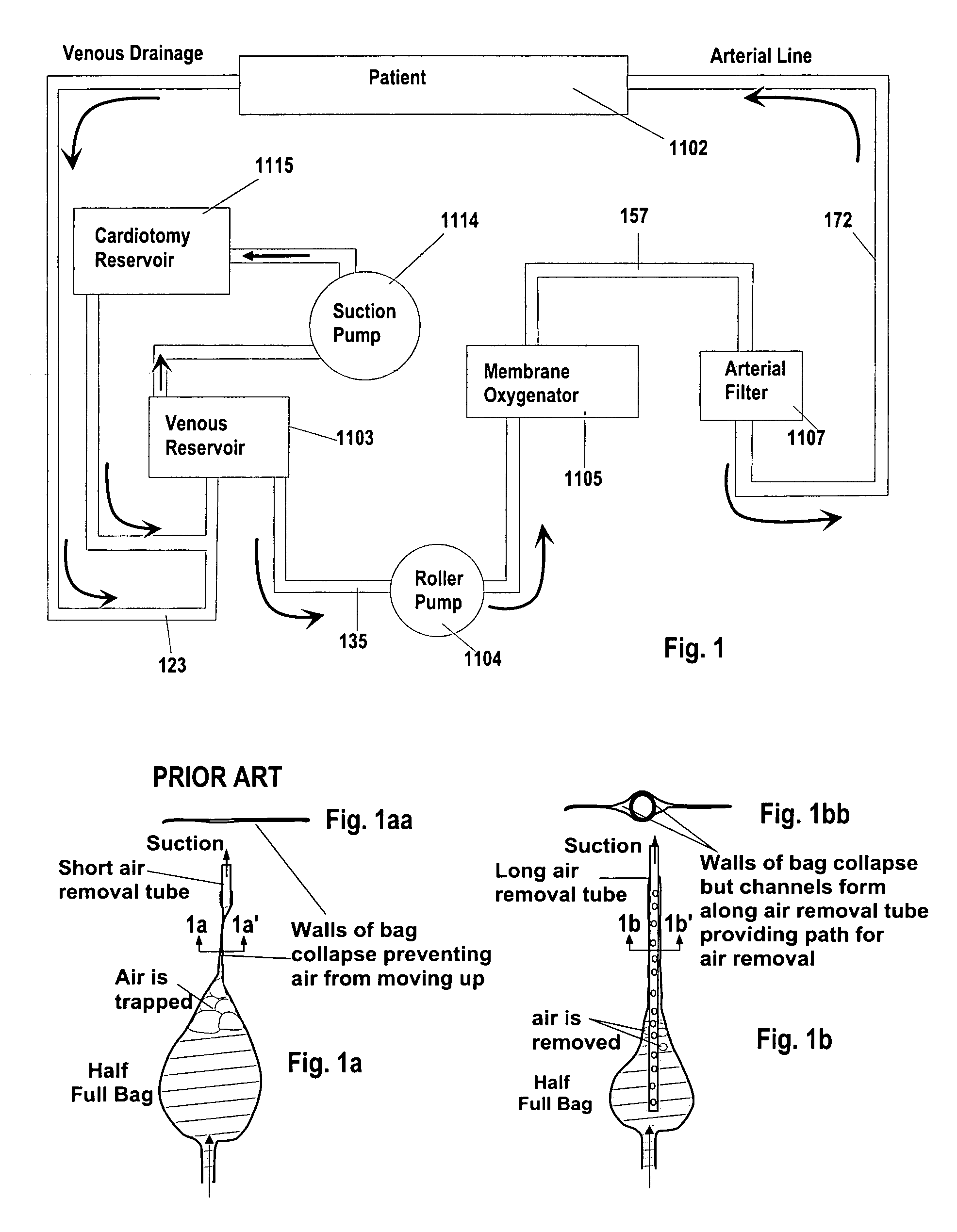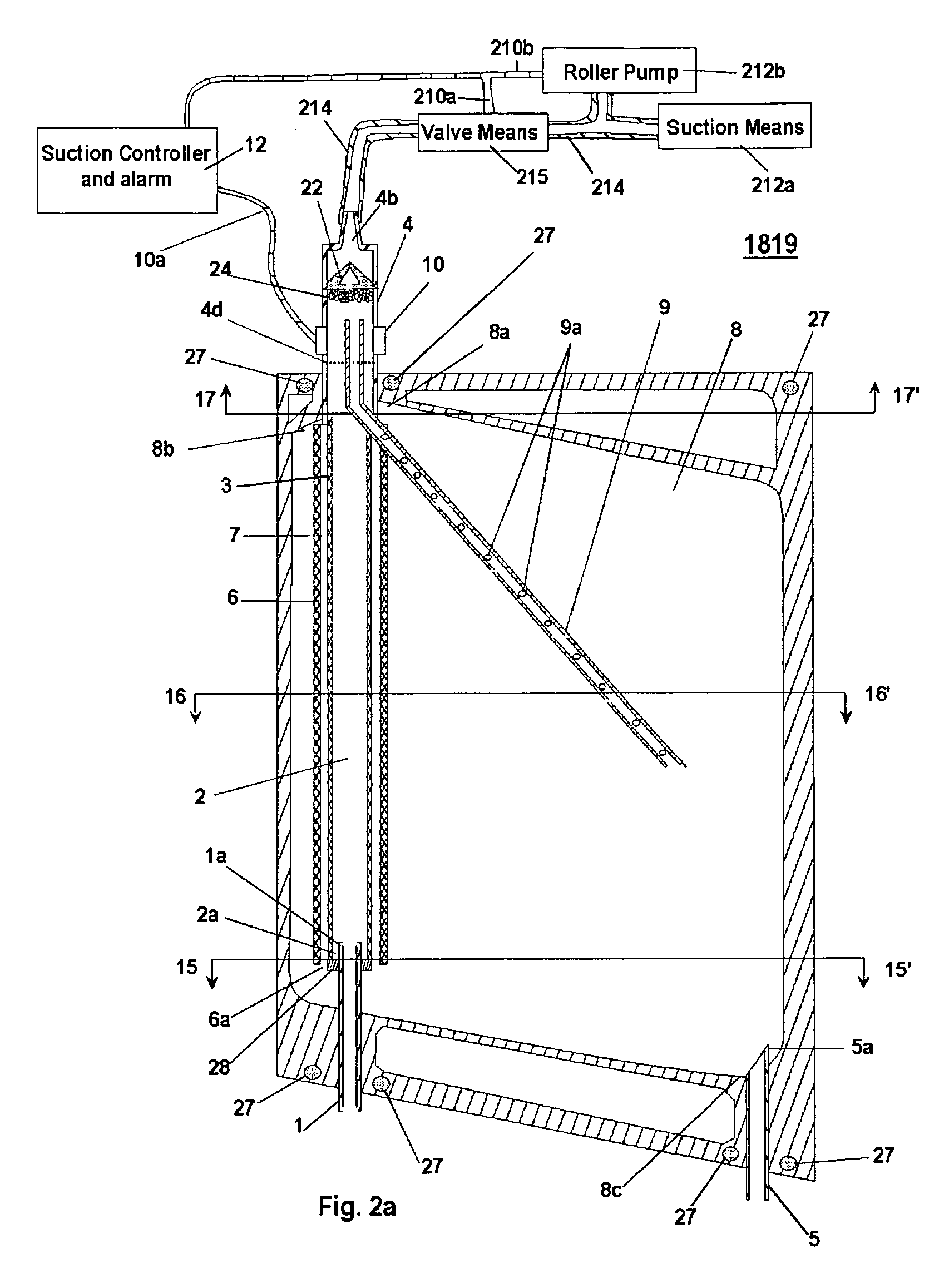Automated means to remove air from venous blood during CPB
a technology of venous blood and air removal, applied in the field of blood reservoirs, to achieve the effect of enhancing advantages and uniqueness, and a larger screen area
- Summary
- Abstract
- Description
- Claims
- Application Information
AI Technical Summary
Benefits of technology
Problems solved by technology
Method used
Image
Examples
Embodiment Construction
[0099]Reference should now be made to the drawings wherein the same reference numerals are used throughout to designate the same or similar parts. It should be noted that the use of cardiopulmonary bypass, as shown in FIG. 1, is for descriptive purposes, and should not be taken as a limitation to the use of the devices described hereinafter. It should also be noted that the term soft shell reservoir, venous bag and bag are used interchangeably.
[0100]FIG. 1 is a schematic representation of a system according to the present invention and showing the relative location of the venous reservoir in a typical cardiopulmonary bypass circuit. As shown, tubing 123 is inserted at one end by means of a cannula (not shown) in the vena cavae for obtaining venous blood from the heart (not shown) of patient 1102. Tubing 123 is coupled, as an example, to venous reservoir 1103. The blood is drawn from venous reservoir 1103 via tube 135 by roller pump 1104 and pumped through a membrane oxygenator 1105 ...
PUM
 Login to View More
Login to View More Abstract
Description
Claims
Application Information
 Login to View More
Login to View More - R&D
- Intellectual Property
- Life Sciences
- Materials
- Tech Scout
- Unparalleled Data Quality
- Higher Quality Content
- 60% Fewer Hallucinations
Browse by: Latest US Patents, China's latest patents, Technical Efficacy Thesaurus, Application Domain, Technology Topic, Popular Technical Reports.
© 2025 PatSnap. All rights reserved.Legal|Privacy policy|Modern Slavery Act Transparency Statement|Sitemap|About US| Contact US: help@patsnap.com



